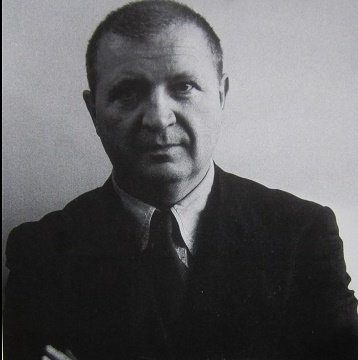Biography
The painter and art theoretician Ad Reinhardt was born Adolf Frederick Reinhardt in Buffalo, N.Y. on Dec. 24, 1913. He died on Aug. 30, 1967. He is known for the extremely abstract paintings of his later career, particularly the “black paintings” of the 1960s.
At Columbia University in New York City, Reinhardt studied art history; later, he taught at Brooklyn College (from 1947 until his death).
His early works, which belong to the formative years of abstract expressionism, are composed of small rectilinear shapes painted in bright, contrasting colors. During the 1950s his canvases became increasingly monochromatic and symmetrical. Reinhardt had a thorough understanding of the historical progression and philosophic bases of modern art movements.
Adolf Frederick Reinhardt was one of the few members of the American Abstract Artists who began his artistic career as an abstract painter. His bold abstractions of the late 1930s showed evidence of a sophisticated understanding of abstract composition. He worked in collage as well as paint, bringing to this medium an all-over compositional approach that signified his imminent move toward the pure geometric structure.
In 1941 Reinhardt began to break up the geometric structure of his paintings. By 1948 he was exhibiting compositions that replaced visual form with calligraphic, all-over patterns that put him in an uncomfortable alliance with Abstract Expressionism. By the 1950s, however, he moved again toward strict geometric purity, creating symmetrical, rectangular shapes in single colors that reflected his early appreciation of geometric abstraction. From that time until his death in 1967, Reinhardt continued to simplify and purify his paintings-purging the bold colors and eventually arriving at his black paintings, the solemn, reductivist canvases for which he is perhaps best known.

